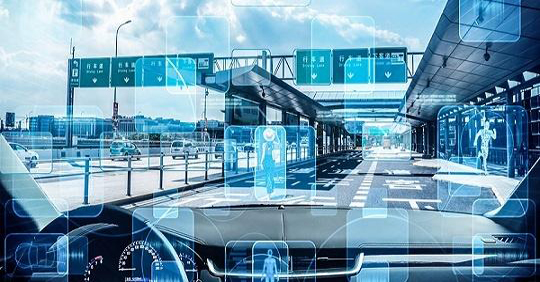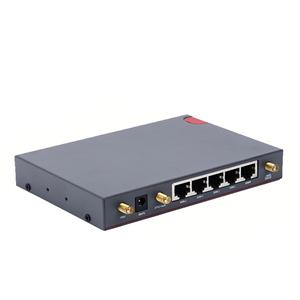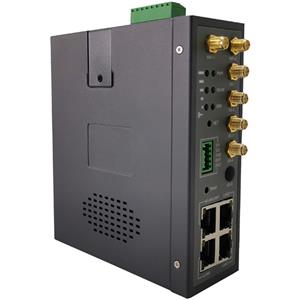Vehicle communication technology, cellular car network
Smart cars are a hot concept, and smart cars in the future cannot be separated from the Internet. For the foreseeable future, cars will be able to communicate wirelessly with each other and with the transportation infrastructure, and you can browse the weather forecasts and headlines on the smart screen when you drive to work.

In the mobile and automotive industries, this concept is called "Cellular Vehicle Communication" (C-V2X).
In November 2018, Shanghai's world's first V2X "three-span" interoperability test tested a car equipped with C-V2X car networking technology. The vehicle can alert the driver to traffic lights outside the line of sight, intersection collisions, and sharp bends in front. Such as early warning, this is a function that is not available in the traditional in-vehicle ADAS active defense system. Different brands of vehicles can also achieve tacit communication, such as forward side collision, emergency braking and other functions.
To communicate wirelessly, you must first allocate the network and spectrum.
Recently, the US Federal Communications Commission Chairman Ajit Pai proposed to allow the C-V2X system and unauthorized Wi-Fi equipment to use the 5.9 GHz band, and the US government initiated the process of allocating the radio spectrum.
Pai's advice is simple: split the existing 75 MHz bandwidth into two to three parts, the higher 20 MHz for C-V2X and the lower 45 MHz for unauthorized use, such as Wi-Fi, the remaining 10 MHz is used for C-V2X or DSRC, which is short for dedicated short-range communication.
"These gold spectrums have been idle for 20 years, and it is time for the FCC to revisit the 5.9 GHz band," Pai said.
Since there is already a nearby 125MHz 5GHz spectrum allocated to Wi-Fi, the Wi-Fi spectrum will increase to 170MHz after this allocation.
Routers can use additional Wi-Fi spectrum to provide better home and office wireless services, while the C-V2X and other possible transportation systems can take advantage of the remaining Wi-Fi spectrum.
As early as February of this year, a number of companies from the automotive, wireless and technology industries have submitted comments to the FCC requesting an administrative license to deploy cellular vehicle networking (C-V2X) technology in the 5.9 GHz band. Companies submitting comments include Daimler, Volkswagen, BMW, Jaguar Land Rover, T-Mobile, Intel, Nokia, Ericsson and more.
Previously, at the Consumer Electronics Show in 2019, Ford Motor Company announced plans to deploy C-V2X technology in all new models in the United States in 2022.
In May of this year, it was reported that the FCC planned to launch a new assessment in June to vote whether to open the 5.9 GHz band for networked cars and Wi-Fi.
Technical dispute
But in fact, before the cellular car network (C-V2X), there is no other vehicle communication technology. The DSRC is a “no sense of existence” traffic communication technology. In 1999, the FCC reserved the 75 MHz band for the automakers in the 5.9 GHz band for the development of the DSRC. According to automakers and regulators, the use of this technology can reduce hundreds of thousands of accidents every year.
Unlike 4G and 5G communication technologies, DSRC does not require cellular or data networks to operate, and cars equipped with DSRC technology do not need to pay any cellular network operators.
The DSRC transmission system broadcasts 10 times of vehicle information per second, including positioning, speed and acceleration information.
Since DSRC is based on the IEEE 802.11p standard, it supports wireless access in vehicles. In the highway toll collection and yard management application scenarios, DSRC technology is adopted to realize the no-stop fast lane.
The short-range communication technology was once considered a very promising technology in the automotive industry, but it has made little progress in the past 20 years, and automakers have been slow to adopt it.
Even now, American automakers still have differences in whether they continue to use DSRC systems or use 4G or 5G-based systems.
The advantage of DSRC technology is that the standard is set earlier and the industry chain is relatively mature. It is deployed in the early developed countries where the Internet of Vehicles started earlier, but in the environment of high network capacity and high-speed driving, DSRC performance is weaker than C-V2X technology. standard.
The C-V2X is a rising star. Its advantages are communication range, delay and scalability. Its spectrum bandwidth is flexible, and it has the characteristics of wide coverage, high reliability and support for large bandwidth. However, network deployment still takes time.
US telecom operators and some mainstream car companies prefer C-V2X, while the EU prefers DSRC. Recently, the EU has issued C-ITS deployment rules, hoping to promote the large-scale deployment of C-ITS services in the EU. However, the EU has not ruled out any underlying communication technology and said that it may use complementary technology for additional technology integration in the future.
Chinese companies mainly promote C-V2X technology. In November 2018, the Ministry of Industry and Information Technology clearly planned the 5.9GHz frequency band as the working frequency band of the car-connected (intelligent network-connected car) direct communication of LTE-based C-V2X technology.
At the 2018 China Automotive Engineering Society Annual Meeting, Dr. Li Wei, Senior Director of Qualcomm Technical Standards, said: “The Chinese authorities have shown a clearer support for the C-V2X vehicle networking technology and standards, which is unique in the world.”
In April 2019, C-V2X commercial road signs were announced in Shanghai, including Changan, FAW, BAIC, GAC, SAIC, Dongfeng, Jianghuai, Great Wall, Southeast, Zotye, Jiangling Group New Energy, BYD, Yutong and other car dealers announced support for C-V2X Commercial road signs, the target equipped with C-V2X module cars will be listed in the first half of 2020-2021.
Ford plans to launch some pre-commercial functions based on C-V2X in China in the first half of 2020, but the technology will wait until 2022 in the US.




